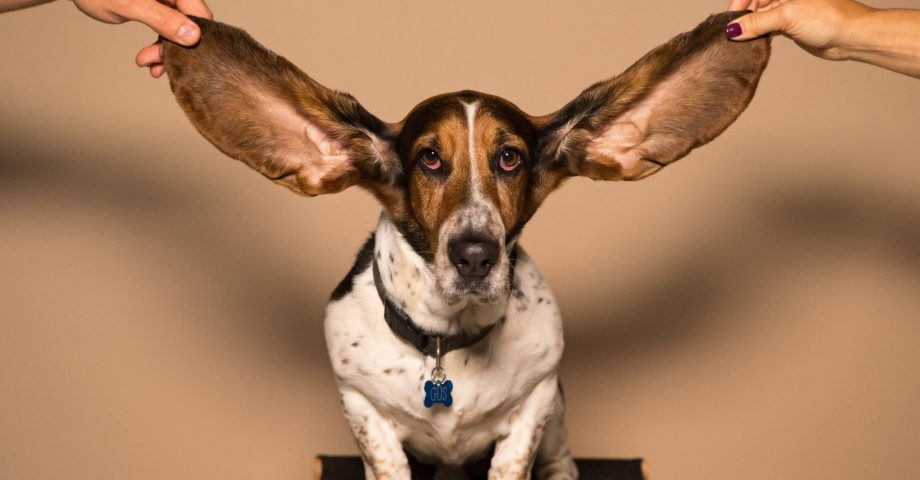‘Man’s best friend’, a common phrase used to describe domestic dogs, referring to their millennia-long history of close relations, loyalty, and companionship with humans.
But dogs serve as more than companions, many earn their keep by working hard. Loyalty, unconditional love and selflessness are just a few of their amazing qualities!
Dogs come in all shapes and sizes, but have you ever wondered why? It didn’t use to be like that, so why not read on to find out how your favourite breed of pooch got its distinctive look with these 22 fun facts about dogs…
From ancient Egypt until today
1. Dogs are truly ancient
The Saluki is the world’s oldest dog breed. They appear in ancient Egyptian tombs dating back to 329 B.C. Saluki dogs were kept as royal pets and were even mummified after death. There are engravings found in Sumer (present-day southern Iraq) that depict a dog, closely resembling a Saluki, which dates back to 7000 BC.
2. There are more dogs in the world than you can imagine!
There are approximately 600 million dogs in the world. It is estimated that nearly 400 million of those dogs are strays. According to the American Kennel Club (AKC), the total number of dog breeds in the world is constantly changing. The AKC currently recognises 195 breeds, with 79 additional breeds working toward full recognition.
3. The biggest pet dog population…
The United States has the highest pet dog population in the world at approximately 75.8 million. For every four people in the US, there is one dog! In some households, there are more dogs than kids making them a large part of the family!

Doggy biology
4. Watch your behavior around dogs, they understand!
Dogs are actually highly intelligent creatures with mental abilities close to those of a 2-year-old child. Dogs can understand up to 250 words and gestures, count up to 5, perform simple calculations, and intentionally deceive other dogs and people. And, that’s not all! Dogs are the only animals that can see in a glance if we are happy, sad, or angry. So, better put on a smile!
5. A dog’s nose is one of a kind!
Actually, a dog’s nose is the equivalent of a human fingerprint, each having a unique pattern of ridges and creases. Everyone knows that dogs have an amazing sense of smell, but were you aware of the fact that it’s actually 10,000 to 100,000 times stronger than ours? One dog scientist likened a dog’s olfactory ability to be able to detect one rotten apple in two million barrels. Dogs are expert sniffers due to the 300 million olfactory receptors in their nose (we have about 6 million) and the part of their brain that is responsible for analysing smells (it is 40 times greater than ours).
6. What’s that sound?
A dogs sense of smell might be pretty amazing, but don’t forget about their hearing! Everything from the positioning of their ears to the muscles in them helps them pick up a whole host of sounds that we humans can’t pick up.
7. That’s tasty!
Dogs have approximately a sixth of the number of taste buds that humans have (1,700 taste buds vs a humans’ 9,000). According to studies dogs have the same four taste categories as humans, so they can identify sweet, sour, salty, and bitter.
8. It’s a colourful world!
It has long been assumed that dogs can only see shades of grey. In reality, dogs can see colours, though the colours are less vivid and fewer than those seen by humans. What’s even more interesting is the fact that dogs have three eyelids in each eye! In addition to a top and bottom lid, they have a “nictitating membrane” in the corner of their eye, primarily for removing dust and mucus from the cornea.
9. Sweaty feet!
Unlike humans who have sweat glands over most of their bodies, the majority of dog’s sweat glands are located in their paws. Some pet owners might notice the faint scent of corn chips or popcorn lingering around their dog. This is called ‘Frito feet’, and it happens when sweat and bacteria build up in the paws. You might also expect your dog’s mouth to smell like, well, dog. But persistent bad breath can be a sign of dental disease or other health problems.

10. Dogs only mate twice a year
Unspayed females only go into heat twice a year, so dog breeders need to plan carefully. Puppies are born blind and deaf. New-born dogs are still developing, so their ear canals and eyes are still closed.
11. Interestingly, dogs have a sense of time
Dogs have a sense of time. It’s been proven that they know the difference between an hour and five. If conditioned, they can predict future events, such as regular walk time.
12. Dogs skulls are entirely different
Between different dog breeds, skulls vary as much as they do between entire species. Also the amount of skull shape variation among domestic dogs exceeds that in wild species.

13. Hotter temperatures affect dogs
Dogs’ normal body temperature is slightly higher than that of humans (it hovers at around 101.5° F), which means that hotter temperatures can affect them more.
Dog personality traits
14. Does a wagging tail mean a happy dog?
Many pet parents assume that a wagging tail means a happy dog. The truth is that tail wagging is a complex language, and different wags mean different things.
15. Let sleeping dogs lie
Have you ever wondered why your dog curls up in a ball when they sleep? It’s an age-old instinct to keep them warm and to protect vital organs while they sleep. A dog’s brain wave patterns during sleep are similar to those of a human, suggesting that dogs dream just like humans do.

16. The cutest helpers
Dogs can do amazing things for people suffering from health problems. They can assist the physically, visually, or hearing impaired, provide support for mental disorders like PTSD and anxiety, reminding handlers to take their medications, assist autistic people in their day-to-day lives, and detect certain health problems, like low blood sugar levels in diabetics. In some lab studies, dogs have even sniffed out cancer.
17. Do dogs have a “sixth sense”?
In a 2010 poll, 67% of pet owners reported their pets acting strangely right before a storm, and 43% said their pets behaved oddly right before something bad happened.
18. A calming yawn
When your dog lets out a big yawn, you probably just assume it means what it does when we yawn—that he’s sleepy. And it certainly can be a sign of tiredness, but dogs yawn for other reasons as well. Dogs can also yawn to calm themselves down, so repeated yawns could be a sign that your pup is feeling anxious or stressed out.

19. Dogs chase
Media portrayals would have you believe that chasing cats is hard-wired in dogs’ DNA. But it’s not specific to cats, their evolutionary hunting instincts are the reason they chase after anything small and speedy, whether it’s their favourite ball or little Tigger.
20. Man’s best friend?
Did you know that petting a dog can actually lower your blood pressure? Well, it can! Also petting a dog and gazing into their eyes releases oxytocin (i.e. the “love hormone”) not only for you but for them as well.
21. Do dogs get jealous?
A study at UCSD claims that your dog can genuinely get jealous when they see you display affection for another creature. So, be careful how you act in your dog’s presence!

The amazing world of dog breeds
22. What do different dog breeds have to offer?
- Basset Hounds actually suffer from dwarfism due to the stunted nature of their legs relative to their heads and bodies
- Korean Jindos are excellent hunters but prefer to bring their catches back without working side by side with their owners
- Kerry Blue Terriers are born black all over before gradually turning blue during the first 2 years of their lives
- Catalburuns have a unique split nose which allows them to smell better than most other breeds of dog
- Rhodesian Ridgebacks were originally bred to hunt lions in the wilderness
- Poodles are the most common dogs to be used to breed new hybrids
- Greyhounds can reach an incredible speed of 45 mph
- Daschunds were bred to fight and kill badgers by farmers
- Basenjis can’t bark, but they can yodel
- German Shepherds make excellent guide dogs as well as security and guard dogs
- Mastiffs, dressed in armour guarded travellers transporting their goods from town to town during the middle ages
- Newfoundlands have webbed paws which make them excellent swimmers
- Shar-Peis are unique in that they have a purple tongue
- Catahoulas are so fleet of foot (or paw) that they can actually climb trees!
FAQs about Dogs
What’s the smartest dog breed?
That honour, believe it or not, tends to go to the poodle! Or, the border collie - the classic sheepdog, regarded for being quick in the mind and quick on foot.
What’s the ‘dumbest’ dog breed?
Spare a thought for bulldogs, Afghan hounds and chow chows - they all tend to score pretty low on the intelligence stakes.
What’s the laziest breed of dog?
The bulldog and chow chow score highly on the laziness stakes too - but Saint Bernards and greyhounds (believe it or not) also tend to love a lie in.
Do you know any fun facts about dogs? Share them in the comments section below!
Are you fascinated by all things canine? Then you’ll adore these interesting facts about French Bulldogs










Comments are closed.